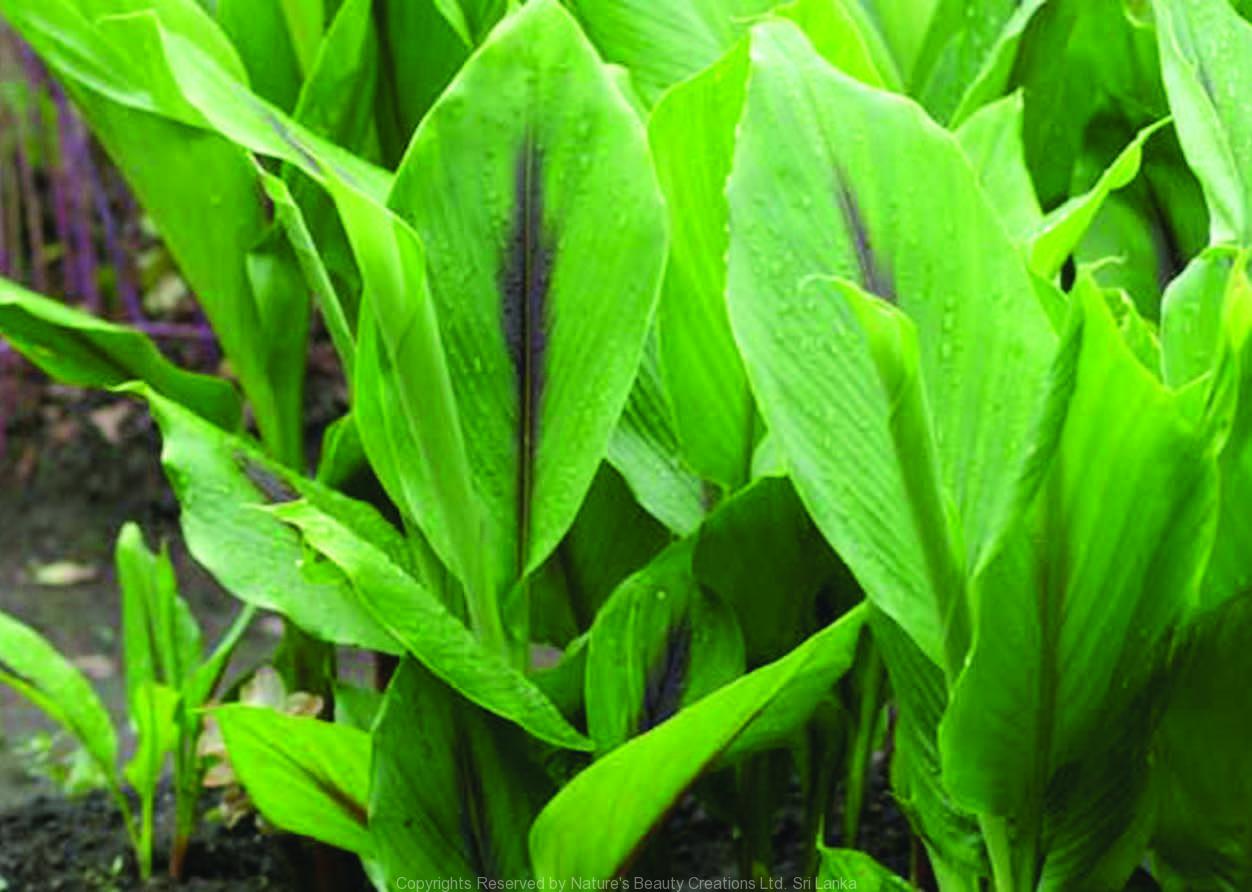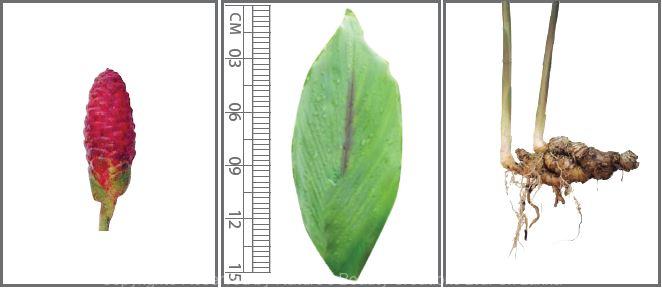

Traditional Knowledge
Useful plant parts :
Rhizome
Uses in traditional medicine :
- A table spoon of decoction prepared by sliced fresh rhizome with juice of sugarcane is taken thrice a day for cough and cold
Scientific Research
Chemical constituents:
Terpenes: p-cymene and 1,8-cineole, curcolonol, guaidiol, curcuminoids: curcumin, demethoxycurcumin, bisdemethoxycurcumin and 3,7-dimethylindan-5-carboxylic acid from leaf oil and plant; sesquiterpenes: furanodiene, furanodienone, zederone, curzerenone, curzeone, germacrone, turmerone, dehydrocurdione, curcumenol, curcumenone and zedoaronediol from rhizomes
Bioactivity :
Rhizome oil: antimicrobial, cytotoxic, antioxidative; curcuminoids: cytotoxic against human ovarian cancer; methanol and dichloromethane extract of rhizomes: anti-inflammatory, antimicrobial, analgaesic; polysaccharide fraction from plant: antitumour
Clinical:
References : Hong, C. H. et al., (2001), Sesquiterpenoids from the rhizome of Curcuma zedoaria, Arch Pharm Res, 24(5), 424-6. Kamanashis, D. and Ashikur, R. M., (2012), Analgesic and antimicrobial activities of Curcuma zedoaria, International Journal of Pharmacy & Pharmaceutical Sciences, 5(4), 322. Lai, E. Y. et al., (2004), Antimicrobial activity and cytotoxicity of the essential oil of Curcuma zedoaria, Am J Chin Med, 32(2), 281-90. Lakshmi, S. et al., (2011), Antitumour Effects of Isocurcumenol Isolated from Curcuma zedoaria Rhizomes on Human and Murine Cancer Cells, International Journal of Medicinal Chemistry. Lobo, R. et al., (2009), Curcuma zedoaria Rosc. (white turmeric): a review of its chemical, pharmacological and ethnomedicinal properties, J Pharm Pharmacol, 61(1), 13-21. Makabe, H. et al., (2006), Anti-inflammatory sesquiterpenes from Curcuma zedoaria, Natural Product Research, 20(7), 680-685. Mau, J. L. et al., (2003), Composition and antioxidant activity of the essential oil from Curcuma zedoaria, Food Chemistry, 82(4), 583-591. Pamplona, C. R. et al., (2006), Seasonal variation and analgesic properties of different parts from Curcuma zedoaria Roscoe (Zingiberaceae) grown in Brazil, Z Naturforsch C, 61(1-2), 6-10. Singh G. et al., (2002), Chemical and biocidal investigations on essential oils of some Indian Curcuma species, Progress in Crystal Growth and Characterization of Materials, 45(1-2), 75-81. Syu, W. J. et al., (1998), Cytotoxicity of Curcuminoids and Some Novel Compounds from Curcuma zedoaria, Journal of Natural Products, 61(12), 1531-1534. Wilson, B. et al., (2005), Antimicrobial activity of Curcuma zedoaria and Curcuma malabarica tubers, Journal of Ethnopharmacology, 99(1), 147-151.
Copyrights Reserved By
Natures Beauty Creations



